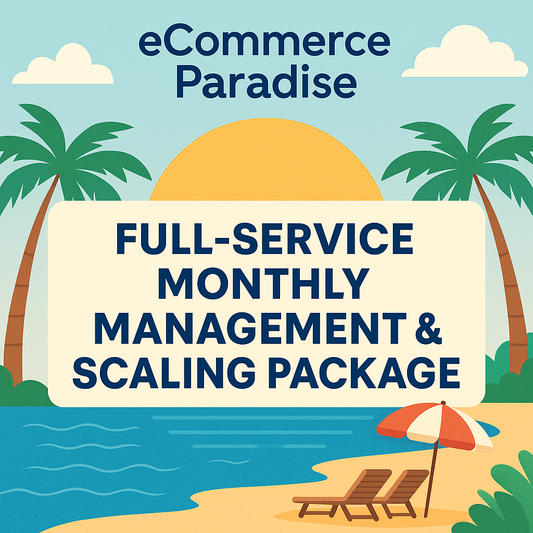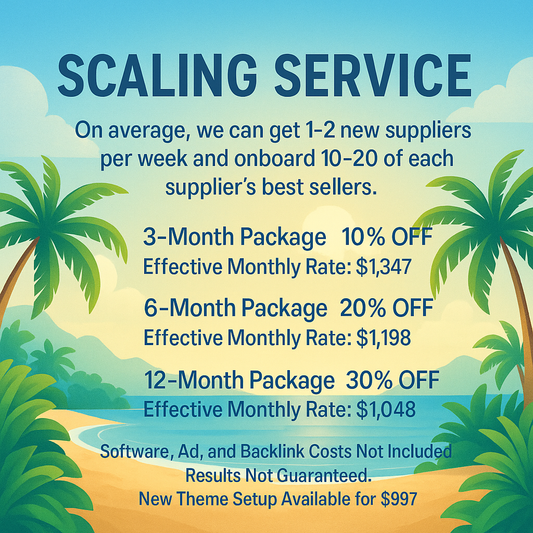
Mastering Your Content Marketing Strategy for SEO Success
Hey there! Trevor Fenner here, the founder of Ecommerce Paradise. If you’re looking to get your content marketing strategy in sync with SEO, you’re in the right place. With an ever-evolving digital landscape, it's vital to establish an effective content marketing strategy that not only drives organic traffic but also fuels your overall growth, especially if you’re in the ecommerce space, where every click counts. Let’s dive in!
Understanding Content Marketing
Content marketing is a powerful approach to attract, engage, and delight your audience while promoting your business. For ecommerce store owners, the crux of your content marketing should focus largely on SEO, which ensures that your content is discoverable by the right audience on search engines like Google.
So what exactly is an effective content marketing strategy? In short, it’s a plan that outlines how you will create, distribute, and manage your content to achieve specific business goals. Here, we’ll break down the components to help you build an effective strategy that integrates SEO and maximizes your visibility.
The Importance of SEO in Your Content Marketing Strategy
First things first—let's talk about why SEO is crucial for ecommerce businesses. SEO (Search Engine Optimization) helps your website rank higher in search engine results, increasing the visibility of your store. Without a solid SEO foundation, even the best content may end up buried beneath competitors.
Keyword Research: The Backbone of Your Strategy
Keyword research is the first step in building out your content marketing strategy. By identifying the right keywords, you’ll be able to create content that aligns with what your audience is searching for. Tools like Google Keyword Planner, SEMrush, and Ahrefs can help you find keywords that are relevant to your niche.
As you conduct your research, focus on long-tail keywords that include terms like "Ecommerce SEO" and "Dropshipping" to attract targeted traffic. For example, instead of just targeting "shoes," consider phrases like "best running shoes for dropshipping" or "Ecommerce SEO tips for footwear."
Creating High-Quality Content
Now that you have your keywords, it's time to develop engaging content that offers real value to your audience. High-quality content is informative, entertaining, and relevant to what your target market wants to learn about.
Different Types of Content to Include
- Blog Posts: Regular blog posts can help position your ecommerce store as an authority in your niche, driving traffic through SEO.
- Videos: Consider creating videos that explain product features or customer testimonials. Videos can engage your audience in a unique way.
- Infographics: These are shareable and visually appealing formats that can present complex information in an easy-to-digest manner.
- Social Media Posts: Create shorter, shareable content that directs followers back to your site.
Also, remember to optimize each piece of content with your focus keywords. This means including them in your headings, introductory paragraphs, and throughout the text where relevant but naturally.
Utilizing Google Shopping Ads Effectively
If you’re looking to enhance your ecommerce visibility further, incorporating Google Shopping Ads into your marketing strategy can be a game-changer. These ads showcase your products directly in search results, making it easier for consumers to find and purchase what they need.
To set up your Google Shopping Ads successfully, ensure that you have optimized your product feed with high-quality images, informative descriptions, and the right keywords. Utilizing SEO in your product titles and descriptions will not only help with organic visibility but also support your paid advertising campaigns.
Building an Email Marketing Strategy
Email marketing remains one of the most effective channels for driving conversions in ecommerce. It allows for personalized messages that can nurture leads and turn prospects into loyal customers.
Creating Engaging Email Content
When building your email content, focus on delivering value. Share snippets of your blog content, exclusive offers, product launches, and more. Make it a point to segment your email lists based on customer behavior, interests, and demographics to tailor your messages for maximum impact.
Optimizing for SEO within Emails
Also, don't overlook the power of SEO within your emails. Include links back to your website's blog, category pages, and product pages. This not only creates a circular pathway for users to navigate your online store but also contributes to your site’s overall SEO.
Promoting Your Content
Creating excellent content is just part of the equation. You need to actively promote it to gain traction. Use social media platforms, influencer partnerships, and even forums to share your valuable content. Engage with your followers and facilitate discussions to build a community around your brand.
Leverage User-Generated Content
Encouraging customers to share their experiences can be incredibly powerful for your ecommerce brand. User-generated content acts as social proof, which can help to foster trust and credibility. Ask your satisfied customers to share photos of their purchases on social media while tagging your brand, and consider featuring this content on your website.
Measuring Your Success
No marketing strategy is complete without analyzing its performance. Use tools like Google Analytics to monitor your organic traffic and track which content pieces resonate the most with your audience. Pay attention to metrics such as bounce rate, average session duration, and conversion rates.
Using KPIs as a Guide
Key Performance Indicators (KPIs) can guide your content marketing strategy. Some common KPIs for ecommerce businesses include:
- Traffic Sources: Understand where your visitors are coming from—organic search, social media, emails, etc.
- Engagement Metrics: Measure how users interact with your content, like comments, shares, and likes.
- Conversion Rates: Track how many website visitors take actions you want, such as making purchases.
- Return on Investment (ROI): Evaluate the financial success of your content marketing efforts.
Regularly reviewing these metrics will help you refine your strategy and maximize your results over time.
Staying Ahead of the Game
Now that you have a comprehensive insight into creating an effective content marketing strategy for your SEO efforts, remember that the digital landscape is ever-changing. Stay informed about trends in SEO, Google Shopping Ads, and dropshipping to adapt your content strategies accordingly.
Engage with your audience, listen to their needs, and continually produce high-quality content that addresses their pain points. By doing so, you’ll establish a loyal following and a thriving ecommerce business.
Your Adventure Awaits!
Embrace the journey of building and refining your content marketing strategy for SEO. It's not just about ticking boxes; it's about connecting with people and providing real value. The excitement of watching your ecommerce business flourish will make every effort worthwhile!
So, go ahead and implement these strategies. With the right focus, your content marketing can become a dynamic driver of growth and success!


















